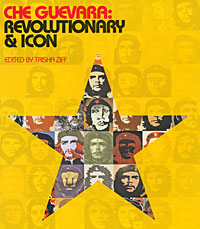Walk through any major metropolis around the globe and it is likely that you will come across an image of Che Guevara - the Korda image of Che, that is, the face of "Guerrillero Heroico" tilted up towards some vision of the future, with his beret, tangle of locks and intense, soulful gaze that crosses cultures and time. The image may be stenciled on a wall, integrated into graffiti, reproduced on a mug or hat, or most likely screen-printed on a T-shirt and worn by anyone aged from eight to eighty.
The fact is that in our global culture, with its proliferation of images beamed at us from televisions and mobile phones, this single image of a face may be the most reproduced image in the history of photography. It has been endlessly mutated, transformed and morphed - and as such tells the history of the last forty years of visual, popular culture.
Possibly more than the Mona Lisa, more than images of Christ, more than comparable icons such as the Beatles or Monroe, this image has continued to hold the imagination of generation after generation. It has been transformed from revolutionary legend to an ingredient in global marketing, to a generic, high-street visual emblem for a vague notion of dissent, rebellion and political awareness, as well as becoming the subject of kitsch and spoof makeovers. Why? Part of the answer is that the image, as icon, has discarded the
Формат: 21 см x 24,5 см. Это и многое другое вы найдете в книге Che Guevara: Revolutionary & Icon (Edited by Trisha Ziff)
